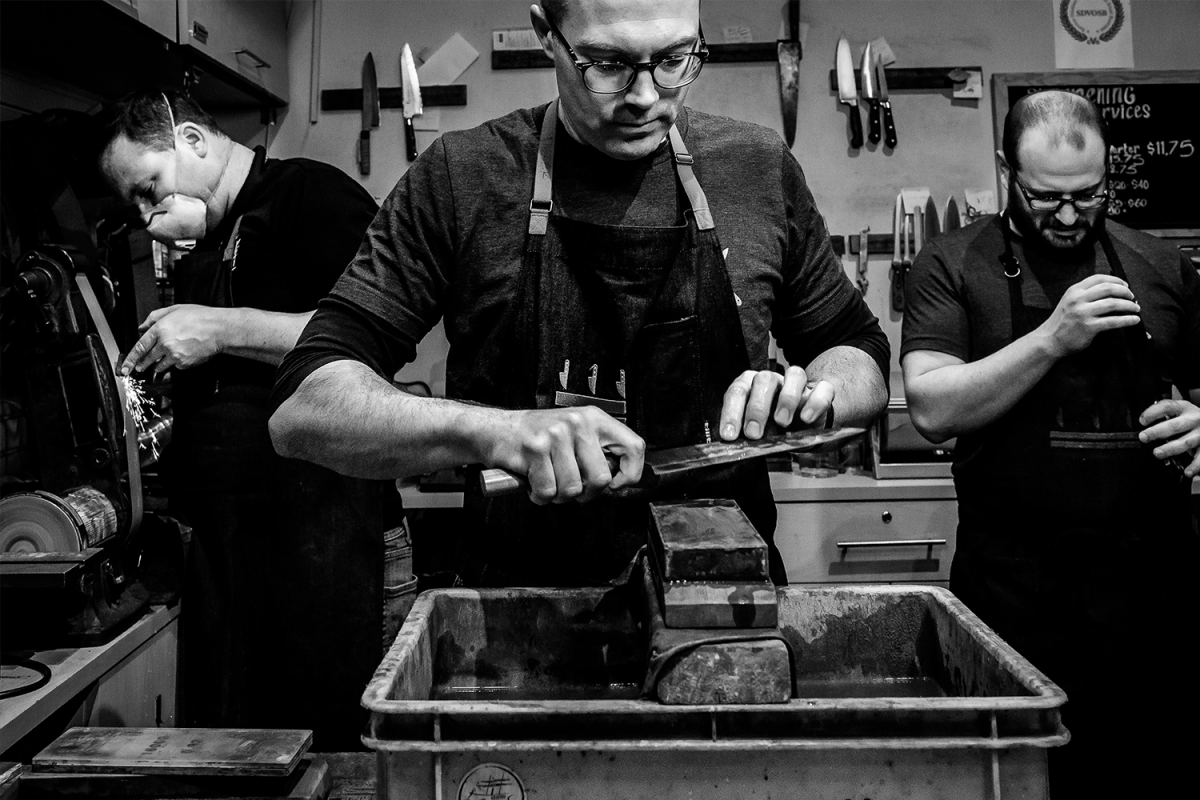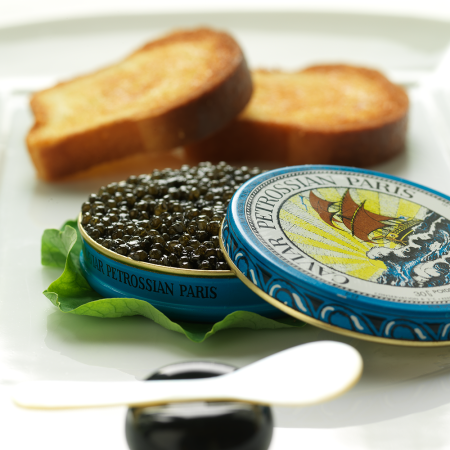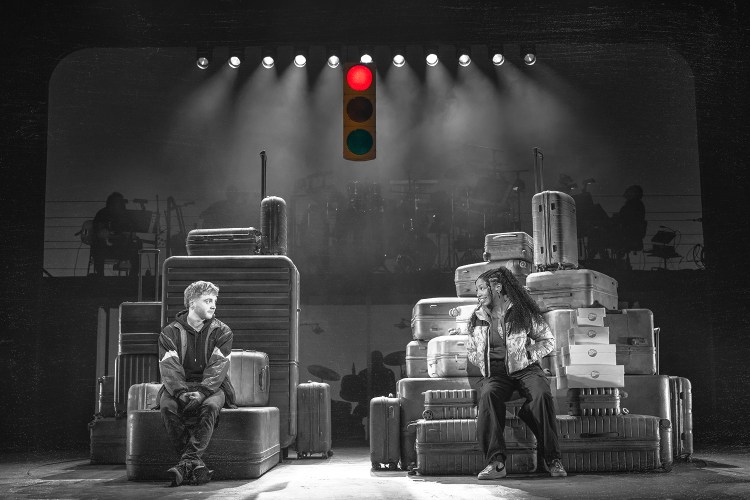Did you know that you really only need one kind of knife to do most of your cooking? And those other knives — the ones that come in that big block, taking up all that room on your kitchen counter: “Unnecessary,” says Derek Swanson, co-owner of District Cutlery, a verified Service Disabled Veteran Owned Business, which sells hundreds of knives from all over the world. Swanson owns the shop with his brother, Ryan, a master sharpener. We sat down with Derek Swanson at his Union Market shop and asked him tons of questions to hone our knife knowledge. This is what we found out.
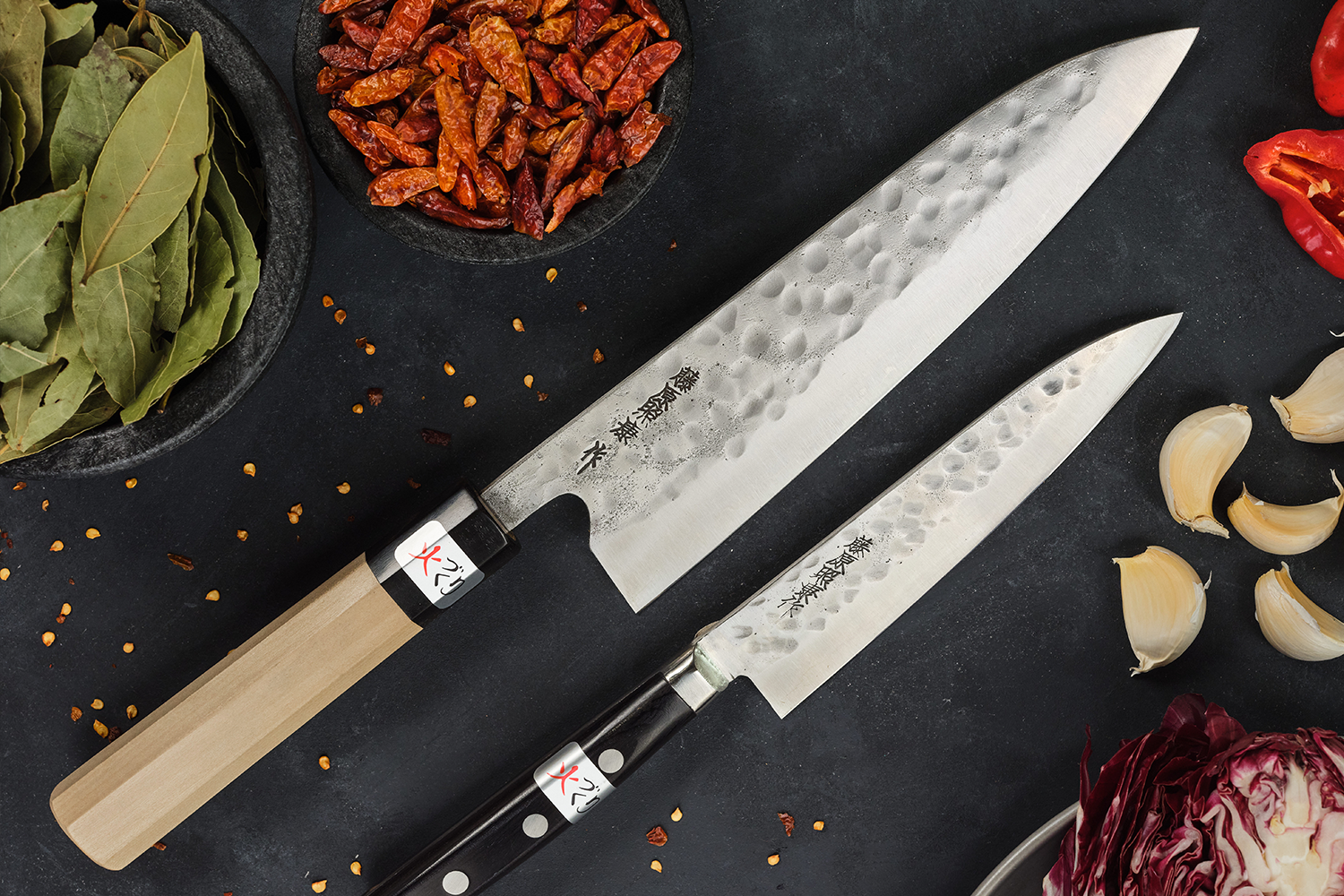
What’s the one knife that everyone who does any kind of cooking should own?
“The chef’s knife is one you can use for probably 90 percent of the things you do in your kitchen. People come in and they say, ‘I’m looking for a new knife set.’ And, one of the first things we say is, ‘I’m going to save you some money because nobody buys sets anymore. I’m going to start you off with one good chef’s knife and that will dramatically improve your experience in the kitchen,” says Swanson. “So instead of spending $500 on ten knives they don’t really need, they can spend $50 on the one knife they really need.” A chef’s knife is about eight inches long and 1½ inches wide.
So what about the other 10% of the time? What are the other knives I need?
“You’d be hard pressed to find things you can’t do with two or three knives” — a chef’s knife, a bread knife, and a utility knife. Swanson says it’s all you really need if you are an at-home chef. In fact, the “bread saw,” as Swanson calls it, is only necessary if you’re cutting a loaf with a really hard crust. Otherwise, a chef’s knife works just fine on bread. Those seeking ease of movement may opt for a utility knife, which has a narrower blade than a chef’s knife with a blade that’s about one inch wide and three to six inches long. “What a wide blade is not good at is changing directions really well. So if you can imagine — I could trim the stem of a bell pepper with a chef’s knife, but some people prefer a smaller blade for maneuverability.”
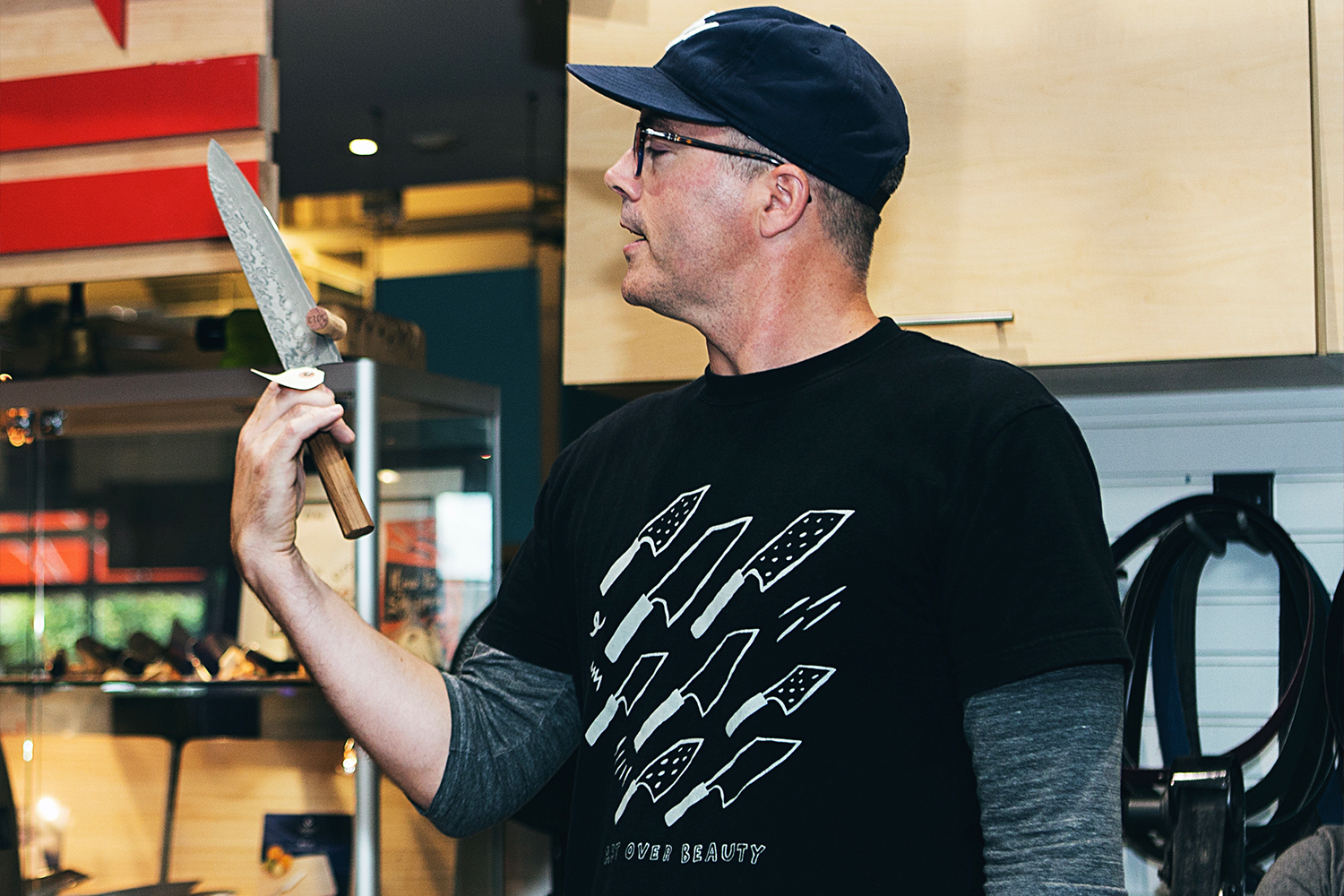
When I’m picking out a chef’s knife, what should I consider?
According to Swanson, you’re pretty much choosing between durability and sharpness. “Steel is either really durable and will stand up to abuse or is really sharp and will stay sharp for a really long time, but you have to be really careful with it,” says Swanson. According to Swanson, generally speaking, German knives are extremely durable, while Japanese knives are extremely sharp.
How often should I use that sharpening rod that came with the block of knives that takes up all that room on my counter?
Never. “Do not use that rod thing,” says Swanson. “We make more money fixing knives damaged by those rods than for any other reason … they create a rough and uneven wear on the blade.”.
If the rod tool is bad for my knives, how should I sharpen my knives at home?
For those looking for a simple touch-up, Swanson recommends getting a piece of leather like the kind barbers use for their straight razors. “Draw the blade back across the leather from one end of the knife to the other a couple of times,” Swanson says. If the leather isn’t effective enough — that is, if you need more than a touch-up but can’t bear to be away from your tools for a professional sharpening — you can get a high-grip sharpening stone, which Swanson sells (he also sells the leather tool). “Generally, the Japanese watering stones are the finest. You use the same principle, drawing the knife across the face stone a couple of times and carefully feel that the blade is sharper. Then you use the leather again.” But Swanson warns that the water stone “can remove material in the wrong place … a water stone can take off the steel pretty aggressively,” so don’t over use it.
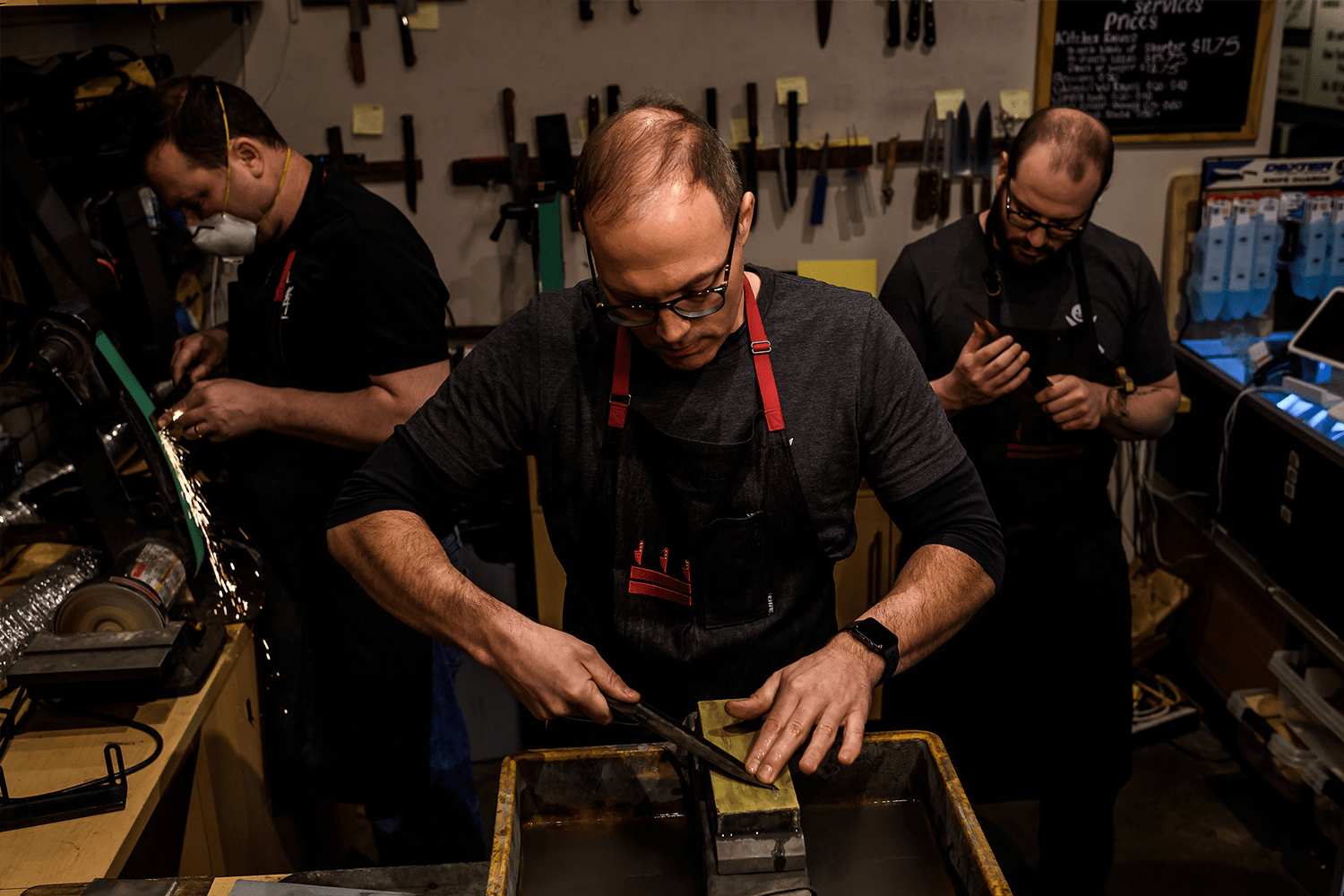
How often should I get my knives professionally sharpened?
While he sharpens the knives of professional chefs about once a month, Swanson says an at-home chef doesn’t need to come in more than once or twice a year (and, keep in mind for next Thanksgiving, there’s usually a big rush just before the holidays). Swanson’s shop charges $14 for sharpening. His shop also sharpens scissors.
What about ceramic knives?
Ceramic knives are fragile and difficult to sharpen, says Swanson. Once they get damaged, there’s not much that can be done to fix them. While they aren’t very expensive, maybe $20, they will cut pretty well. “But the best knives are steel which come in an infinite variety of types and combinations,” he says.
What’s the best way to store my knives?
You can store your knives any way you like as long as you protect the blade. “It’s pretty easy. Just keep your knife in a place that’s going to stay dry and keep it away from hard products that the blade could get caught on. If you’re gonna put it in the kitchen utensil drawer, put it in a box and keep the cover on it inside the drawer. It’s gonna get jangled around with all these other metal utensils and it’s probably sharp enough that it can cut you when you reach for it,” Swanson advises. You can also hang your knives on a magnetic strip affixed to the wall. Basically, you don’t need to spend $100 on a fancy storage box — just find a way to protect the edge, even if that means folding up a thick piece of cardboard and wrapping it around the blade.
What’s the best way to clean my knives?
Absolutely avoid the dishwasher, says Swanson. “The fastest way to shorten the lifespan of your knife is to put it in the dishwasher. A knife that could last 50 years will last only five” if it spends any time in the dishwasher, he says. Swanson says you can simply use plain dish soap and a sponge to clean your knives. “The takeaway is, the better you take care of the tool, the longer you’ll be able to use it.” In fact, a well cared-for knife should last for generations, Swanson says.
What should I do with knives that are no longer functional?
“If we can salvage them we’ll donate them … We have a bucket of lost causes [and] usually donate them to Ronald McDonald’s House, for the families who stay there.”
This article was featured in the InsideHook DC newsletter. Sign up now for more from the Beltway.
